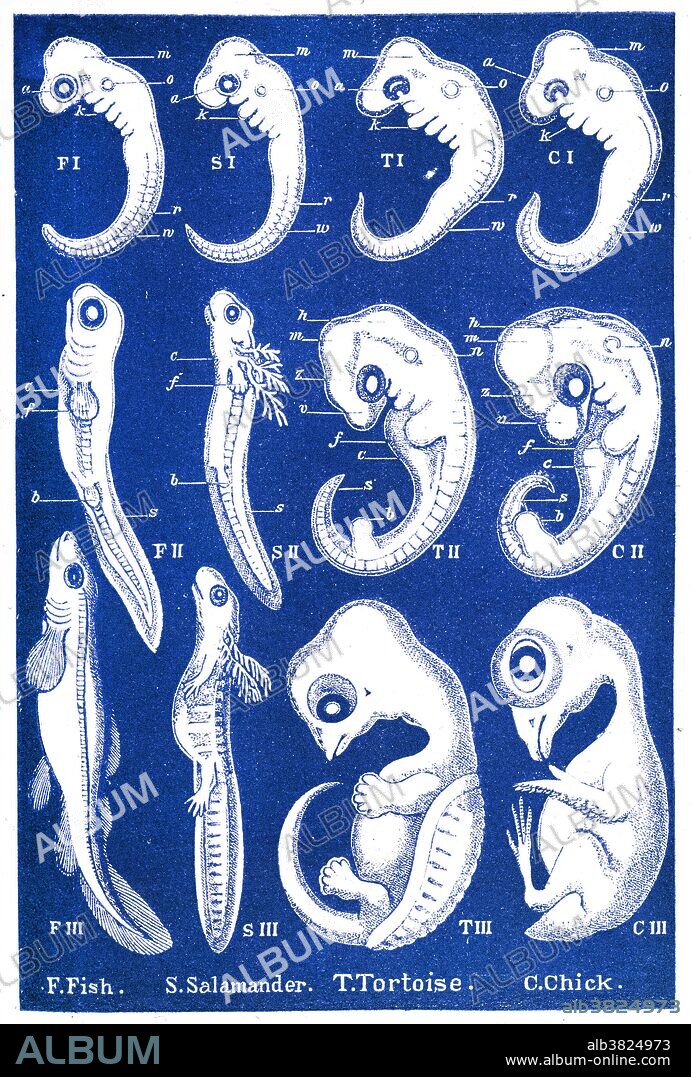alb3824973
Ernst Haeckel's Evolution of Man, 1874

|
Add to another lightbox |
|
Add to another lightbox |



Title:
Ernst Haeckel's Evolution of Man, 1874
Caption:
Ernst Haeckel's Evolution of Man, 1874. "This plate represents the embryos of two of the lower, and two of the higher Vertebrates in three different stages: of a fish (F); of an amphibian (salamandar, S); of a reptile (tortoise, T); and of a bird (chick, A)." Haeckel (1834-1919) was a German biologist, naturalist, and artist who discovered, described and named thousands of new species, mapped a genealogical tree relating all life forms, and coined many terms in biology, including anthropogeny, ecology, phylum, phylogeny, stem cell, and Protista.
Credit:
Album / Science Source
Releases:
Model: No - Property: No
Rights questions?
Rights questions?
Image size:
3461 x 5131 px | 50.8 MB
Print size:
29.3 x 43.4 cm | 11.5 x 17.1 in (300 dpi)
Keywords:
1800S • 19TH CENTURY • AMPHIBIA • AMPHIBIAN • AMPHIBIOUS • ANATOMICAL EVOLUTION • ANATOMY • ANIMAL • ANTHROPOGENIE • ANTHROPOGENY • ART • ARTWORK • BIOGENETIC LAW • BIOLOGICAL • BIOLOGY • BIRD • CHICK • COLORIZED • COMMON ANCESTRY • COMPARATIVE • COMPARED • CONCEPTUS • DEVELOPING • DEVELOPMENT • DIAGRAM • DRAWING • EMBRYO • EMBRYOLOGY • EMBRYONIC • EMBYRO • ENGRAVING • ENHANCED • ENHANCEMENT • ERNST HAECKEL • EVOLUTIONARY • FAUNA • FETAL • FETALIS • FETUS • FOETUS • GROSS ANATOMY • GROWTH • HAECKEL • HISTORIC • HISTORICAL • HISTORY • HUMAN • HUMANE • ILLUSTRATION • ILLUSTRATIONS • INDIVIDUAL • PERSON • REPTILIAN • SALAMANDER • SCIENCE • STAGES • TORTOISE • WILDLIFE • ZOOLOGICAL
 Pinterest
Pinterest Twitter
Twitter Facebook
Facebook Copy link
Copy link Email
Email

